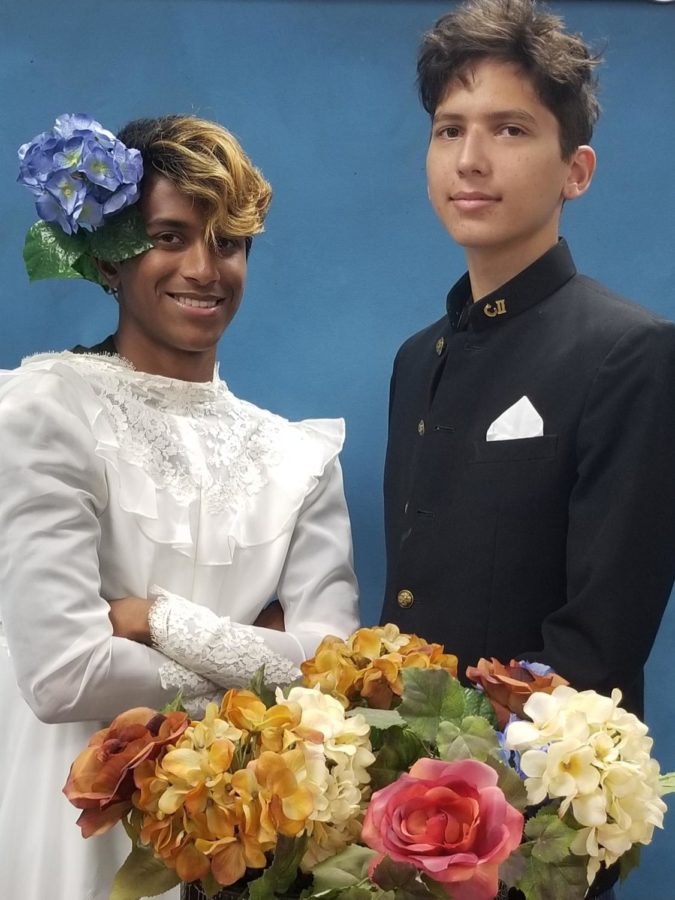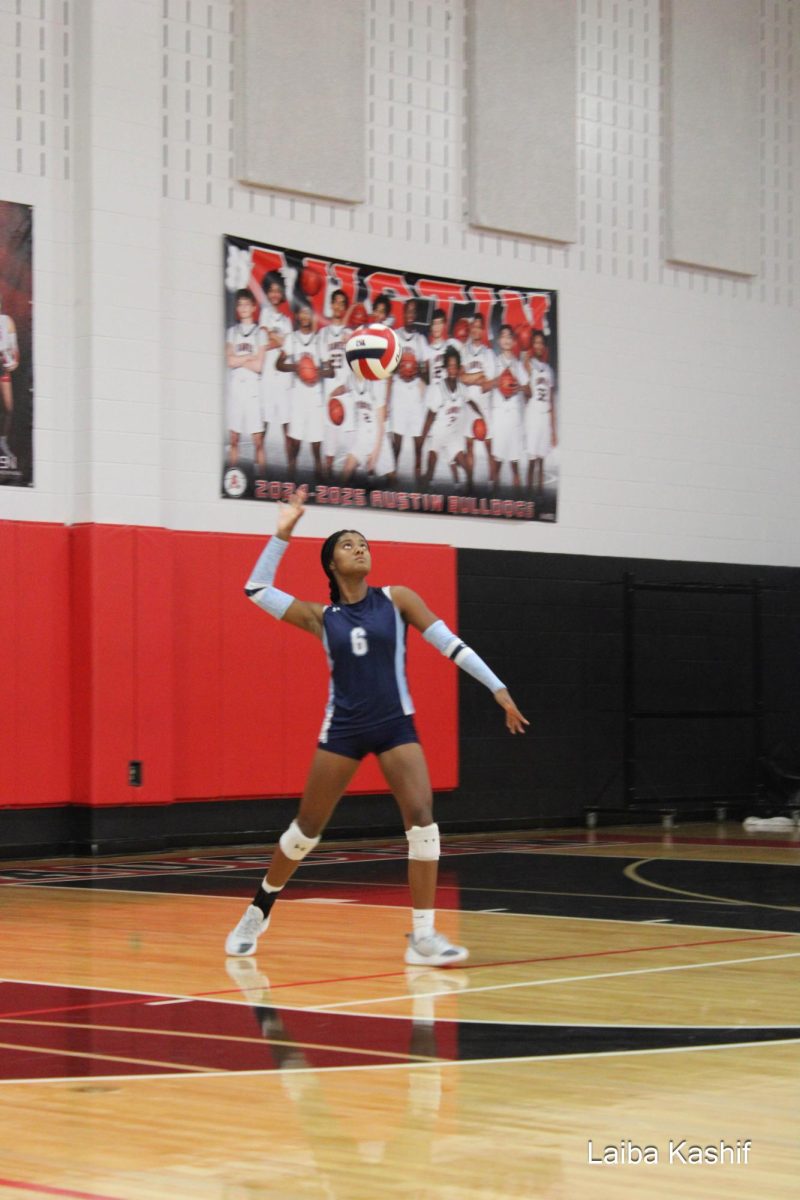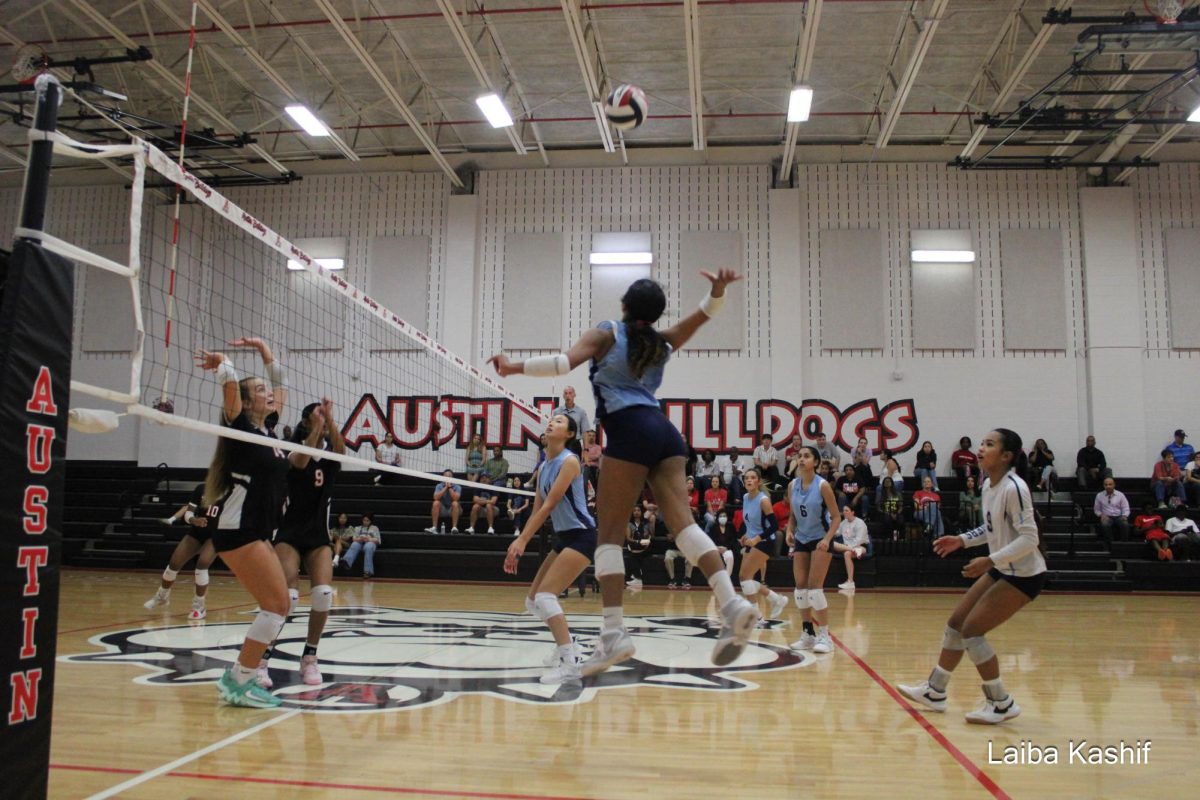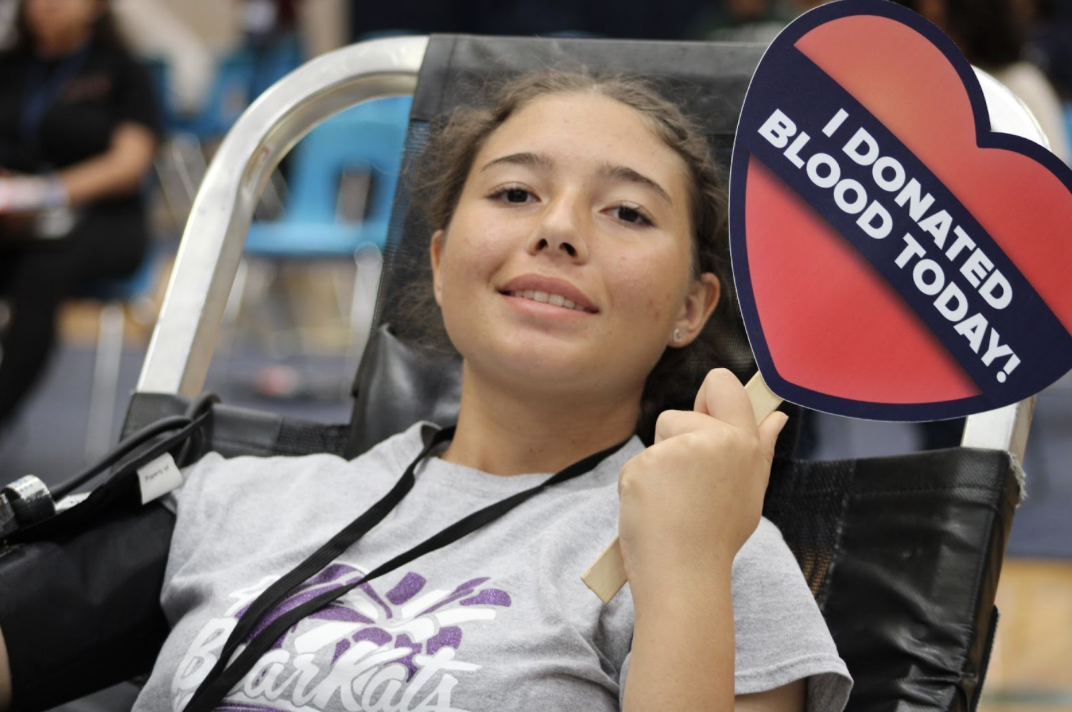Is Heterophobia Real?
In same-sex relationships, couples are often asked: “Who wears the pants in the relationship?” or “Who’s the man in the pairing?” Thus, we had two guys dressed in the traditional wedding dress for the woman and suit for the man. The purpose of this photo is to subvert these gender roles and heteronormative standards.
April 30, 2019
“Why are there gay-only bars, but no straight-only bars?”
Go ahead and pat yourself in the back for such progressive thinking. Because you are absolutely right! Why should we, in the year two thousand and nineteen, continue to relegate ourselves to divided labels and identities when we all bleed the same blood? How do we continue the legacy of our forefathers who have fought hard to ensure us the freedom of existing in integrated sectors rather than let our distinctiveness define who we are?
Why are there gay-only bars, but no straight-only bars?
Then I implore you to probe deeper into your subconscious about other lingering thoughts regarding a community you (presumably) know nor (presumably) bother to know anything about.
Why is there gay pride, but no straight pride? Why is there a more accepting atmosphere on being proud of one’s non-straight sexual orientation over being heterosexual? Why is there a whole month dedicated to being an LGBTQ member, but no month for being straight?
Is heterophobia real?
No, it is not.
Heterosexual people have always been the most privileged of all sexual orientations. Of course, sexuality cannot be proven simply by looking at an individual. (We should not be assuming anyone’s sexualities period.) Still, you cannot deny that straight people stand to benefit more from our society than any member in the LGBTQ+ community.
Who are in the LGBTQ+ community? The acronym is a shorter form of LGBTTTQQIAA, wherein queer people–the word “queer,” which has been claimed back by the gay community, is the umbrella term for anyone who finds themselves under the acronym–can define themselves. It stands for Lesbian, Gay, Bisexual, Transgender, Transsexual, Two-Spirit, Queer, Questioning, Intersex, Asexual, Ally, + Pansexual, + Agender, +Genderqueer, +Bigender, +Gender Variant, +Pangender.
Straight is the default. That is the basis of their privilege. That is the foundation in which all straights benefit from. Being straight is the universally-accepted truth; therefore, everything else that contradicts it is considered to be outside the societal norm.
For the longest time, being gay was a cultural taboo. It existed, yes; it did not exist the way it does now. The treatment of the LGBTQ+ community has improved over time, and it does seem to be existing in the masses in the modern age, but it still does not take away from the point that gay men and women are treated worse than straight men and women.
Same-sex intimacy is criminalized throughout history. Beginning in the Book of Genesis, a book from the Old Testament, being gay was considered to be the downfall of man. In the story of Sodom and Gomorrah, God had had enough of the sinful activities occurring in these two towns. Homosexual intercourse was mentioned here and many people have interpreted that as the reason for God’s decision to destroy them.
Homosexuality was deconstructed as the true reason for God’s decision, with many theologists citing the inhospitality of the residents of Sodom and Gomorrah to the visiting angels as the reason for God to invoke his hand. Nevertheless, Christians have come to believe that being gay was abominable and against the word of God.
The Book of Leviticus warned against following the actions of Egyptians and Canaanites. What did they do? Men married men and women married women. While the story of Sodom and Gomorrah was a reach in justifying homophobia, this one said it more explicitly:
“You shall not lie with a male as with a woman; it is an abomination” (Leviticus 18:22).
Being gay meant committing a sin. Committing a sin meant going to hell.
Christian doctrine came to influence society’s mindset and laws. Still to this day, several nations have outlawed gay marriage. Even Switzerland, one of the most known progressive countries in terms of same-sex laws and protection have not made gay marriage legal. The first nation to do so was the Netherlands in 2001. The United States made same-sex marriage legal in 2015, Australia in 2017.
Put that into perspective in the historical timeline. The beginning of civilization is accredited to Mesopotamia in the fourth millennium BCE. The year is 2019. It has been over 6000 years and internationally the majority of same-sex couples are still not allowed to legally marry
It was, however, not always like this. Several people would mention Classical Greece as the exception in this case. In Greek myth, Zeus inadvertently created soulmates after physically-splitting up human bodies for growing too strong. The result was a doubling in the population, but also incomplete souls who longed for their other half. This popular story included same-sex relationships, which could explain why Greeks tolerated homosexuality.
Though the biggest contributor to the discourse was the Sacred Band of Thebes. This is the famed 150 pairs of male lovers because the bond of a lover would protect and defend them through each battle. Homosexuality was encouraged to boost morale in militaries in Ancient Greece. This was especially true in Sparta, where wives of soldiers had to dress up as men so their husbands could easily transition from gay to straight love.
There is a difference that people seem to forget though. While Ancient Greece is portrayed to be this gay haven, in many other regions, gay relationships were tolerated, not accepted. Tolerating seems more like resignation than full acceptance. You can tolerate something while still hating it.
Yes, Sappho of Lesbos–whose name is where lesbian is literally derived from because she was, in fact, a lesbian, and she wrote poems about loving women–is from Greece and created her own haven. But Ancient Greece is not the model society our modern era should strive for for the LGBTQ+ community.
Everyone has to conform to heteronormative standards. These standards are incredibly damaging to children, yet our society continues to perpetuate it.
In media, straight couples get the most stories. And when gay couples do get stories, they are mostly of the tragic and hypersexualized kind. For instance, “Call Me By Your Name” and “Blue Is The Warmest Color,” respectively. There exists the “bury-your-gays” trope in which television writers conveniently kill the only LGBT+ character on the show–whether that character is a main or recurring one. The most recent of this act of killing is one of the main characters in The Magicians after he came out as bisexual and shown to be pining after another character on the show.
“Love, Simon” is the film to hopefully end that. It depicted Simon as someone who was struggling with his sexuality. He was used to the belittlement of his sexuality, even though he himself was not “out of the closet.” But in the end, when he was forced to come out, he found the love of his life. The movie was light-hearted and portrayed an innocent relationship. It was a comedy, a romantic comedy about a gay high school boy.
Growing up, male children, whenever they play around with female children, are told often by adults that he likes her. Gay people have been accused of enforcing the gay agenda on their own kids, but straight people do not realize the hypocrisy between their words and their true actions. Children should not be told, in the first place, who to love.
The result is internalized homophobia. This is where heteronormative standards are damaging even to gay children. Because they are bombarded with photos of straight couples as the “normal” one and expected to marry someone of the opposite gender, they grow up to be homophobic.
Homophobia encourages a situation in which there is an us versus them. Separating people based on who they love is morally wrong but is socially acceptable. Discriminating against who other people love or marry increases the distance that the Gay Liberation Movement has been wanting to bridge. It is continuing a cycle of hatred and violence for reasons that being gay is just plain wrong and being straight is plain right.
Children who grew up not desiring the opposite sex believe themselves to be insane or mentally unhealthy because it is not the narrative they have been taught from the beginning. It has been ingrained in them the notion that heterosexuality is the only valid form of being human. They end up hating themselves. They end up hating other members of the LGBTQ+ community. They never learned that love is love.
Heterophobia does not exist. Merriam Webster defines heterophobia as the “irrational fear of, aversion to, or discrimination against heterosexual people.” But discriminating against straight people is impossible because “heterophobes” do not stand to benefit from the privileges homophobes do.
Being a heterophobe–being gay–gets you killed.
So, why are there gay-only bars, but no straight-only bars? It is because our society has denied them a space in which gay people can truly feel safe in. It is because members of the LGBTQ+ community have been forced to conform to heteronormative standards. It is because they have been told to hate themselves for being non-straight. It is because society has enforced the notion that being anything but straight is not normal, even abominable. It is the history of our world to treat gay people as less than human, that because of their sexual orientations, they are to be denied their basic human rights.
It is because they cannot love who they want to love.








John • Jun 18, 2023 at 5:00 pm
My comment was deleted.
Says a lot.
adviser • Jul 27, 2023 at 5:31 pm
Your comment was not deleted, it needed to be approved by an admin before going public.
John • Jun 10, 2023 at 8:48 am
What a ridiculous article. I have had gay friends act like I am disgusting for kissing my straight partner, and have had them overtly makes comments like ‘eww, straight people kissing, how gross’ and actually mean it. I have been refused access to pride events with gay friends because my sexuality (straight) would be seen as provocative. And these are just some examples where gay people have directly had issues with me because I am straight. Heterophobia absolutely exists, the revulsion I have seen for straight people from gay people is vile and completely unacceptable. Can you even imagine if I said ‘eww, gay people kissing, how gross’. I’d be flayed alive. Being gay does not give you the right to treat others the way you are complaining about being treated, then pretend it doesn’t count because they are straight.
dani (not credible imao) • Nov 20, 2022 at 9:59 pm
gonna correct something – Allie’s aren’t part of LGBTQ+. They are supporters, not part of it. I think heterophobia does exist in a way, because you see it often. It might not be able to be described as heterophobia, but it definitely exists. I’ve seen people be disgusted by straight people, and it’s just so… hypocritical. Just let people be themselves, even if you don’t like what they are. Obviously, you can learn that being homophobic, heterophobic, etc. is changeable. However, being straight, gay, asexual, etc. is not a choice.
Owen • Apr 19, 2022 at 9:10 am
Wow, that was beautifully put
Laurenz Quinto highschool student NOT reporter. • Feb 11, 2022 at 8:11 am
this article itself is proof of heterophobia with lines like:
“Everyone has to conform to heteronormative standards. These standards are incredibly damaging to children, yet our society continues to perpetuate it.”
oh yeah no. i can tell that there is no heterophobia at all in you when you call it damaging to children xD
“phobias” just likes “isms” are individual traits. not social constructs no matter how much you want to redefine these terms as such in order to exempt yourself from criticism.
if you think heteronormativity is damaging then you’re a heterophobe.
Dani (still not credible) • Nov 20, 2022 at 10:07 pm
Personally, I agree with you. Heterophobia absolutely exists. But yes, heteronormativity can be damaging. A queer child might think it’s wrong due to it, and think that they themselves are a terrible person. So yeah, it can be damaging, just not in all cases. Obviously, if a child is sat down with and is regularly told that it’s okay to be queer and stuff, it’s not as damaging if at all. But then that wouldn’t be heteronormativity anymore. But obviously, you don’t have to listen to me because you’re entitled to your own opinion. /gen
Stevan Gheemen • Oct 24, 2021 at 9:49 pm
You are in denial. If you think homophobia is a choice and can be cured, that also means heterophobia is a choice and can be cured. So being LGBTQ can be cured? Oopsie. Do you really want to go into *that* rabbit hole? Or would you rather act like an adult, recognize that just as people are born LGBTQ, the vast majority of other people are not, and have a natural aversion to the LGBTQ lifestyle? Maybe the better strategy is to become tolerant of simple facts.
Straight up nonsensical article • Oct 24, 2021 at 1:39 pm
You don’t need to benefit from being “phobic” in order to be phobic of something. Homophobes hate gay people, just as some gay people hate straight people – and those gay people are Heterophobes. It’s as simple as that. I can see why there are gay-only bars, and pride months and whatnot. Afterall, straight people have been “celebrated” for all of history essentially, and gay people have been oppressed, and still are in some respects. However, the fact that straight people are privileged, and gay people aren’t, does not mean that there is no heterophobia. Once again; Heterophobia is the fear / hate / etc. of straight people. I know for a fact that there are gay people who hate straight people, and that already means that Heterophobia exists. It’s really not that deep.
Jason • Sep 1, 2021 at 9:17 pm
Just because we’re a majority doesn’t mean we don’t face discrimination. I as a heterosexual person have faced people in the LGBT community who have assumed I was homophobic or have attacked my personality for no other reason than my sexuality. That is the definition of heterophobia and it does exist
Ayden • Apr 11, 2021 at 7:24 pm
We do not need straight only bars because straight people do not need such places to feel safe amongst themselves. When the majority tries to block out minorities it turns into a class system, like “no blacks aloud”. When I minority tries to protect themselves with a safe haven for their people that is a class struggle. It is like complaining about the homeless getting homeless shelters.
ronald russell • Feb 25, 2021 at 6:13 pm
Your apparent rationale notwithstanding, heterophobia is very real, It is a complex mindset (frame of reference) that develops across time and circumstance both personally and collectively. It, too, takes on an evolving hate that ultimately gets wrapped in psycho-euphemisms that serve to assuage the conscience of its adherents.
Brodie • Nov 16, 2020 at 7:20 pm
There are a couple things that I as a straight male, amd going to have to disagree with you on this.
1.) In the original bible, which was in Greek, there wasn’t one word of homosexuality being a sin. In the late 19th century, American catholics paid a German Priest to transcribe the modern bible today, so that it says the word homosexual instead of the word Pedophile.
2.) Julius Caesar used to make his own soldiers sodomize each other, as to develop a stronger bond. So it was not always discriminated against in history.
3.) There’s a bar in town that if you’re caught as a straight male they’ll stab you. So don’t say that heterophobia doesn’t exist. Just because the mass majority of homosexuals don’t fear straight men, does not mean 100% don’t. And you don’t know 100% of all men in the LGBTQ community.
BigGayAl • Jun 29, 2020 at 4:25 pm
If you feel and experience something it is real for you and it exists, unless a high school student writes an article saying it isn’t real (because she has experienced everything and would know). You do not get to determine what is “real” for anyone else, none of your opinions effect whether or not any proposition is true, and you don’t have to like it.